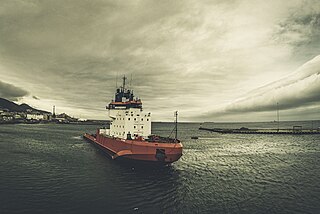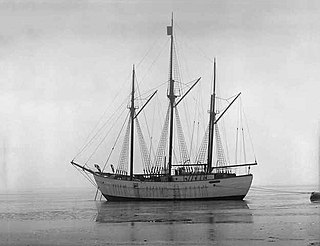 W
WMV Abegweit was an icebreaking railway, vehicle, and passenger ferry which operated across the Abegweit Passage of Northumberland Strait, connecting Port Borden to Cape Tormentine between 1947 and 1982.
 W
WMV Abegweit were icebreaking railway, vehicle, and passenger ferries which operated across the Abegweit Passage of Northumberland Strait, connecting Borden-Carleton, Prince Edward Island to Cape Tormentine, New Brunswick. There were two vessels named Abegweit that serviced this route between 1947 and 1997.
 W
WMV Arctic is an icebreaking cargo ship built in 1978 at the Port Weller Dry Docks in St. Catharines, Ontario, Canada. The ship is owned and operated by the Fednav Group.
 W
WVladimir Ignatyuk is a Russian icebreaking anchor handling tug supply vessel. She was built by Burrard-Yarrows Corporation in Canada in 1983 as Kalvik as part of an Arctic drilling system developed by BeauDril, the drilling subsidiary of Gulf Canada Resources. After the offshore oil exploration in the Beaufort Sea ended in the early 1990s, she was sold to the Canadian shipping company Fednav in 1997 and renamed Arctic Kalvik. In 2003, she was purchased by Murmansk Shipping Company and transferred to Russia.
 W
WKigoriak is a Russian icebreaking anchor handling tug supply vessel. Built by Saint John Shipbuilding & Dry Dock Company for Canadian Marine Drilling (Canmar) in 1979 as Canmar Kigoriak, she was the first commercial icebreaking vessel developed to support offshore oil exploration in the Beaufort Sea.
 W
WThe icebreaker Fyodor Litke was active in the Soviet era in the Arctic, until the late 1950s. It was built in 1909 in England for the Saint Lawrence River service and initially named CGC Earl Grey after Albert Grey, Governor General of Canada. After four years in Canada it was sold to the Russian government and eventually renamed Fyodor Litke in honour of the Arctic explorer Fyodor Petrovich Litke.
 W
WVladimir Ignatyuk is a Russian icebreaking anchor handling tug supply vessel. She was built by Burrard-Yarrows Corporation in Canada in 1983 as Kalvik as part of an Arctic drilling system developed by BeauDril, the drilling subsidiary of Gulf Canada Resources. After the offshore oil exploration in the Beaufort Sea ended in the early 1990s, she was sold to the Canadian shipping company Fednav in 1997 and renamed Arctic Kalvik. In 2003, she was purchased by Murmansk Shipping Company and transferred to Russia.
 W
WMaud, named for Queen Maud of Norway, was a ship built for Roald Amundsen for his second expedition to the Arctic. Designed for his intended voyage through the Northeast Passage, the vessel was built in Asker, a suburb of the capital, Oslo.
 W
WRMS Nascopie was a steamship built by Swan Hunter and Wigham Richardson of Newcastle upon Tyne, England. She was launched on December 7, 1911 and achieved speeds of 14.1 knots (26 km/h) during her sea trials. She was powered by triple expansion steam engines with cylinders 21.5, 35.5 and 58 inches in diameter and a stroke of 42 inches (1067 mm). Her boiler pressure was 180 pounds-force per square inch and the two main boilers were 15 feet in diameter and 11.5 feet long, fired by six furnaces.
 W
WThe Polar 8 Project was a Canadian shipbuilding project intended to provide the Canadian Coast Guard with a large icebreaker capable of operating year-round in the Northwest Passage. The project was developed as a means to assert Canada's sovereignty in the Arctic Ocean. It commenced in 1985 but was cancelled in 1990 while still in the final design stage. It was Canada's direct response to the unauthorized transit through the Northwest Passage in summer 1985 by USCGC Polar Sea, a United States Coast Guard icebreaker. Polar 8 refers the capability of the ship in ice of that thickness in feet, in this case 8 feet (2.4 m). Initiated in 1985, the vessel was never constructed and the project was cancelled in 1988.
 W
WSS Southern Cross was a steam-powered sealing vessel that operated primarily in Norway and Newfoundland and Labrador.
 W
WWilliam Lyon Mackenzie, built by Russel Brothers, named for Toronto's first mayor William Lyon Mackenzie, is a fireboat for the Toronto Fire Services (TFS). It was built in 1964 with a modified Tugboat hull to provide marine fire fighting as well as icebreaking capabilities. In 2004 the fireboat was refurbished and it is expected to be in service until 2037.
 W
WThe Wind-class icebreakers were a line of diesel electric-powered icebreakers in service with the United States Navy, United States Coast Guard, Royal Canadian Navy, Canadian Coast Guard and Soviet Navy from 1944 through the late 1970s. They were very effective ships: all except Eastwind served at least thirty years, and Northwind served in the USCG continuously for forty-four years. Considered the most technologically advanced icebreakers in the world when first built, the Wind-class icebreakers were also heavily armed; the first operator of the class was the United States Coast Guard, which used the vessels for much-needed coastal patrol off Greenland during World War II. Three of the vessels of the class, Westwind, Southwind, and the first Northwind all went on to serve temporarily for the Soviet Union under the Lend-Lease program, while two others were built for the United States Navy and another was built for the Royal Canadian Navy; all eight vessels were eventually transferred to the United States Coast Guard and the Canadian Coast Guard.